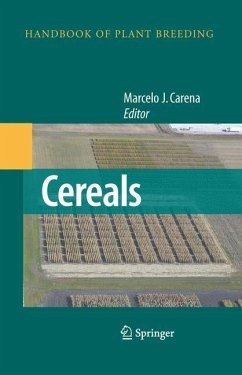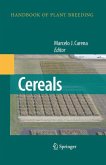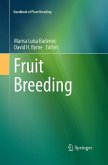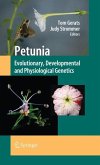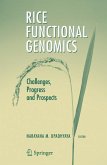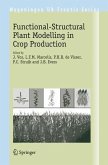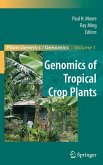Agriculture depends on improved cultivars, and cultivars are developed through proper plant breeding. Unfortunately, applied plant breeding programs that are focused on cereal commodity crops are under serious erosion because of lack of funding. This loss of public support affects breeding continuity, objectivity, and, perhaps equally important, the training of future plant breeders and the utilization and improvement of plant genetic resources currently available. Breeding programs should focus not only on short-term research goals but also on long-term genetic improvement of germplasm. The research products of breeding programs are important not only for food security but also for commodity-oriented public and private programs, especially in the fringes of crop production. Breeding strategies used for long-term selection are often neglected but the reality is that long-term research is needed for the success of short-term products. An excellent example is that genetically broad-based public germplasm has significantly been utilized and recycled by industry, producing billions of dollars for industry and farmers before intellectual property rights were available. Successful examples of breeding continuity have served the sustainable cereal crop production that we currently have. The fact that farmers rely on public and private breeding institutions for solving long-term challenges should influence policy makers to reverse this trend of reduced funding. Joint cooperation between industry and public institutions would be a good example to follow.
The objective of this volume is to increase the utilization of useful genetic resources and increase awareness of the relative value and impact of plant breeding and biotechnology. That should lead to a more sustainable crop production and ultimately food security.
Applied plant breeding will continue to be the foundation to which molecular markers are applied. Focusing useful molecular techniques on the right traits will build a strong linkage between genomics and plant breeding and lead to new and better cultivars. Therefore, more than ever there is a need for better communication and cooperation among scientists in the plant breeding and biotechnology areas. We have an opportunity to greatly enhance agricultural production by applying the results of this research to meet the growing demands for food security and environmental conservation. Ensuring strong applied plant breeding programs with successful application of molecular markers will be essential in ensuring such sustainable use of plant genetic resources.
Hinweis: Dieser Artikel kann nur an eine deutsche Lieferadresse ausgeliefert werden.
The objective of this volume is to increase the utilization of useful genetic resources and increase awareness of the relative value and impact of plant breeding and biotechnology. That should lead to a more sustainable crop production and ultimately food security.
Applied plant breeding will continue to be the foundation to which molecular markers are applied. Focusing useful molecular techniques on the right traits will build a strong linkage between genomics and plant breeding and lead to new and better cultivars. Therefore, more than ever there is a need for better communication and cooperation among scientists in the plant breeding and biotechnology areas. We have an opportunity to greatly enhance agricultural production by applying the results of this research to meet the growing demands for food security and environmental conservation. Ensuring strong applied plant breeding programs with successful application of molecular markers will be essential in ensuring such sustainable use of plant genetic resources.
Hinweis: Dieser Artikel kann nur an eine deutsche Lieferadresse ausgeliefert werden.
From the reviews:
"This volume brings together a panel of international experts in the field to summarize the current state of progress in breeding cereal crops. Chapters describe genetic backgrounds, germplasm and molecular resources, major breeding achievements, and current breeding goals for most of the major cereal crops, excluding oats. ... this volume nicely summarizes the current state of the field and will thus be an excellent resource for students and practitioners. Summing Up: Highly recommended. Upper-division undergraduate through professional collections." (R. M. Warner, Choice, Vol. 47 (1), September, 2009)
"This volume brings together a panel of international experts in the field to summarize the current state of progress in breeding cereal crops. Chapters describe genetic backgrounds, germplasm and molecular resources, major breeding achievements, and current breeding goals for most of the major cereal crops, excluding oats. ... this volume nicely summarizes the current state of the field and will thus be an excellent resource for students and practitioners. Summing Up: Highly recommended. Upper-division undergraduate through professional collections." (R. M. Warner, Choice, Vol. 47 (1), September, 2009)

